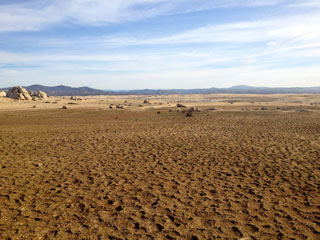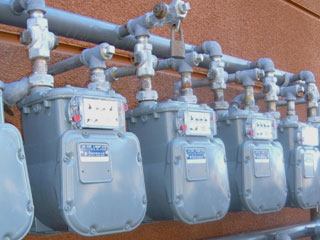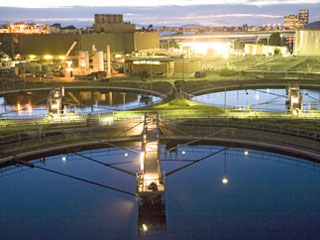The 2015 California Water Law Symposium examined the topic of reasonable use in the 21st century. In this spirit, organizers from U.C. Hastings crafted a panel regarding the scope of the “reasonable use” doctrine and the limits of the State Water Resources Control Board’s (State Water Board) power to regulate water users.
Category: Article
The Consolidated Delta Smelt Cases
Nearly two-thirds of the California population and seven million acres of agricultural land receive water from the State Water Project (“SWP”) operated by the California Department of Water Resources (“DWR”) or the Central Valley Project (“CVP”) operated by the United States Bureau of Reclamation (Bureau) (SWP and CVP collectively referred to as “Projects”). In the Consolidated Delta Smelt Cases, two district court opinions for the Eastern District of California review a Biological Opinion (“BiOp”) issued in 2008 by the Fish and Wildlife Service (“FWS”) that placed restrictions on the Projects’ operations to protect endangered species.
In re Consolidated Salmonid Cases
Nearly two-thirds of the California population and seven million acres of agricultural land receive water from the State Water Project (“SWP”) operated by the California Department of Water Resources (“DWR”) or the Central Valley Project (“CVP”) operated by the United States Bureau of Reclamation (“Bureau”) (SWP and CVP, collectively referred to as “Projects”). In the Consolidated Salmonid Cases, the Eastern District Court of California reviewed a Biological Opinion (“BiOp”) issued in 2009 by the National Marine Fisheries Service (“NMFS”) that placed restrictions on the Projects’ operations to protect endangered species.
Review of California statutory and case law regarding groundwater extraction and the recently passed groundwater management bills
On August 29, 2014, the California Legislature approved a package of bills aimed at managing groundwater extraction. For 100 years, the Legislature had declined to regulate groundwater extraction, and courts have refused to expand local or state agency control over the practice.
From The Ground Up: California’s Drought Prompts Sweeping Groundwater Legislation
In the midst of California’s most severe drought in thirty years, legislators took an historic step towards remedying its long-term negative impacts on the state’s groundwater supply. On Friday, August 29th, the California Senate and Assembly passed a package of bills (SB 1168, SB 1319, and AB 1739) which aims to regulate the extraction of groundwater and establish a sustainable program of groundwater management over the next 50 years.
Groundwater and the Public Trust Doctrine: The Recent Scott River Decision
In Environmental Law Foundation et al. v. State Water Resources Control Board, 34-2010-800000583, the Superior Court of Sacramento issued a narrow ruling that the public trust doctrine applies to groundwater hydrologically connected to navigable waters.
Frost Protection Diversions and Stranded Salmon — The California Court of Appeal Affirms State Water Board Reliance on Reasonable Use Law To Maintain Instream Flow
In California water law these days, there is increasing talk about the reasonable use provisions of the California Constitution and the California Water Code. These provisions provide that all water uses and methods of water diversion in California must be reasonable and cannot be wasteful.
Short-term Transfers and Unenforceable Underground Regulations
On January 17, 2014, Governor Edmund G. Brown, Jr. declared a drought state of emergency and directed agencies to take action, including expediting water transfers, stating that “Voluntary water transfers from one water right holder to another enables water to flow where it is needed most.” Even if water will be available for transfer this year, short-term transfers may not occur in part because of added procedures that the Department of Water Resources is imposing on transfer proponents.
Upgrading Conservation Pricing Proposition 218, Smart Meters, And The Step Beyond Tiered Rates
Proposition 218 is pushing California’s conservation-pricing programs to evolve. Conservation-pricing programs use price signals to discourage the waste of water. Currently, such programs commonly rely on tiered rates. Customers pay a flat fee for a “basic use allocation,” which “provides a reasonable amount of water for [each] customer’s needs and property characteristics.”1 Once the basic use allocation is exhausted, a higher rate is charged for each additional unit of water consumed.2 Tiered-rate programs have proven effective even when per-unit price increases are small. Historically, both California’s Legislature and its courts have favored such programs, finding them consistent with Section 2 of Article X of the State’s Constitution, which states that “the conservation of [the State’s] waters is to be exercised with a view to the reasonable and beneficial use thereof.”3
California Wastewater Rates — Life after Bighorn v. Verjil
In California, voters passed Proposition 218 in 1996, which added articles XIII C and XIII D to the state Constitution. These articles set limits on property-based revenues (taxes, assessments, fees, and charges), and require voter approval for most increases. Particularly pertinent to wastewater rates is the inherent friction between Article XIII C Section 3, which affirms the right of voters to reduce their local property-related bills, including their wastewater rates, and Article XIII D Section 6, which allows local governing bodies to raise wastewater rates without voter approval.1 This paper discusses that friction as set forth in Bighorn-Desert View Water Agency v. Verjil, 39 Cal.4th 205 (2006), and explores relevant jurisprudence supporting a compromise between rate reductions and statutorily mandated rates.



